Tools Required
| • | J 39200 Digital Multimeter |
| • | J 28509-A Bearing Remover |
| • | J 26900-5 Vernier Caliper |
| • | J 38276 Puller Adapter |
| • | J 35452 Generator Pulley Remover/Installer |
| • | J 35419 Bearing Installer |
| • | J 22888 Universal Puller |
| • | J 29533-A Oxygen Sensor Wrench |
Disassembly Procedure
- Remove the generator from the vehicle. Refer to Generator Replacement .
- Refer to Charging System Description and Operation .
- Scribe matchmarks (1) on the front and rear housings to ensure proper assembly.
- Remove the nut (3) and the terminal insulator (2).
- Remove the following from the end cover (1):
- Remove the end cover.
- Remove the brush holder cover.
- Remove the 5 screws (2).
- Remove the brush holder (3).
- Remove the voltage regulator (1).
- Remove the seal.
- Remove the 4 screws (2) and the rectifier holder (1).
- Remove the 4 rubber insulators.
- Remove the pulley nut using the J 35452 or the J 39194-B and a 10 mm socket. Loosen the nut with the 7/8 in box end wrench while holding the rotor shaft with the 10 mm socket wrench.
- Remove the pulley.
- Remove the 4 nuts (2) and the clip (1) from the rectifier end frame.
- Remove the rectifier end frame using the J 28509-A .
- Remove the washer from the rotor.
- Remove the rotor from the drive end frame.
- Inspect the front bearing (2) for rough operation, wear or damage. If necessary, replace the front bearing.
- Remove the 4 screws (1).
- Remove the bearing retainer.
- Press out the front bearing using an appropriate adaptor.
- Inspect the rear bearing (2) for rough operation, wear or damage. If necessary, replace the rear bearing.
- Remove the rear bearing outer cover (1).
- Remove the rear bearing from the rotor using the J 22888 .
- Remove the rear bearing inner cover.
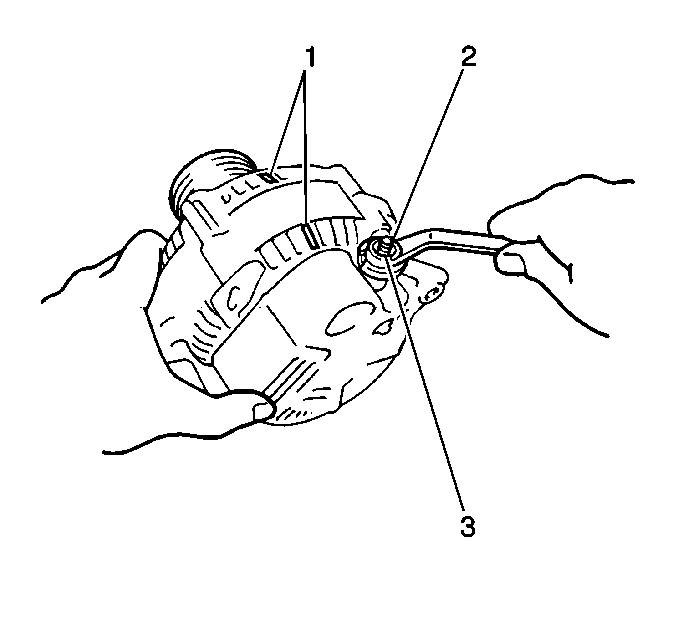
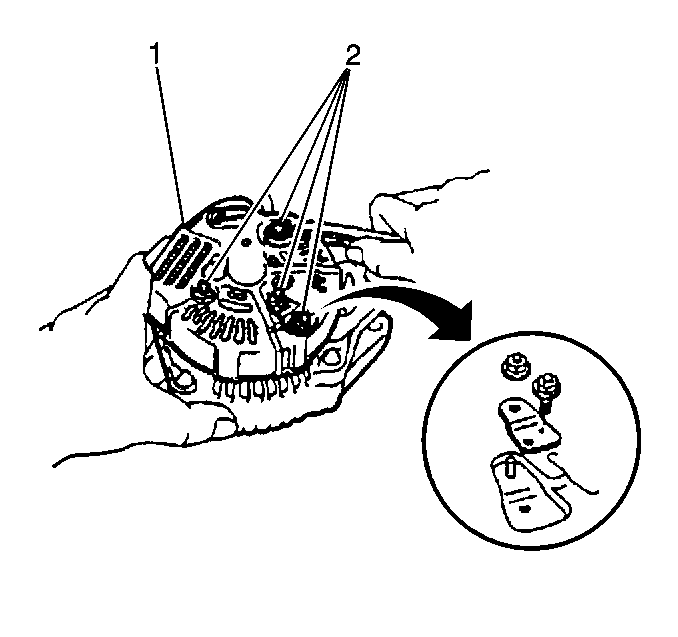
| • | 1 bolt |
| • | 3 nuts (2) |
| • | The plate terminal |
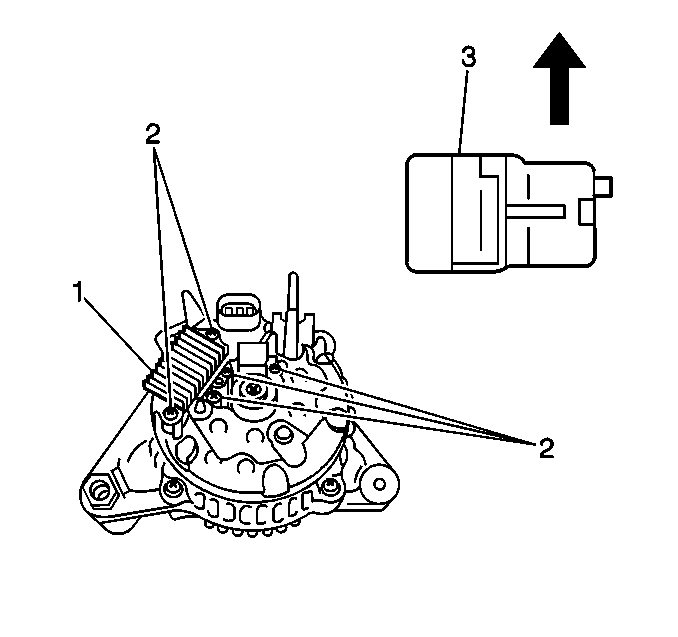
Important: Note the correct orientation of the brush holder for easier installation.
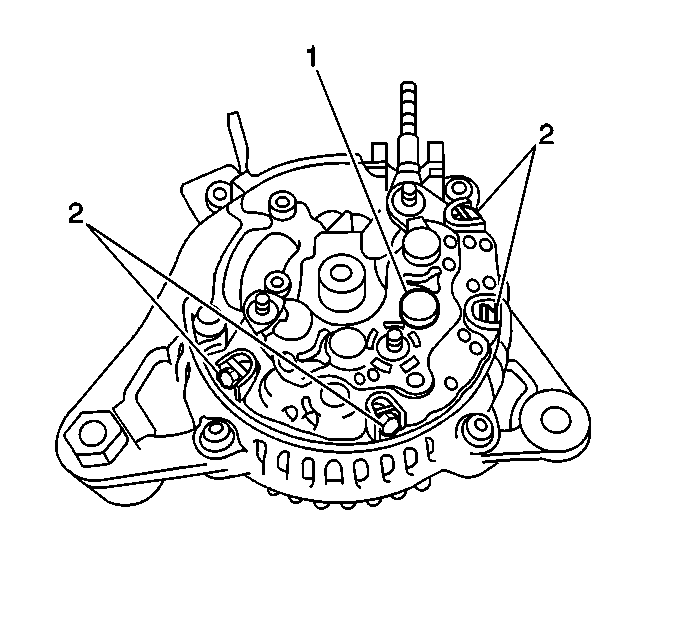
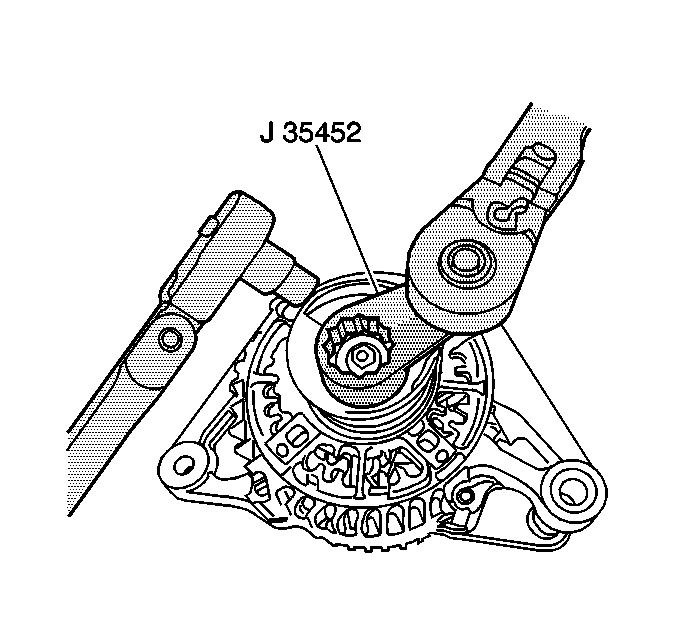

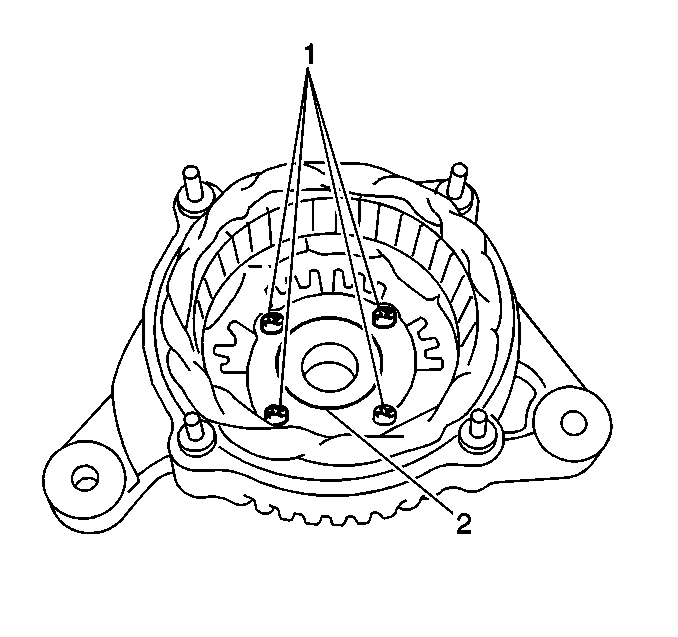
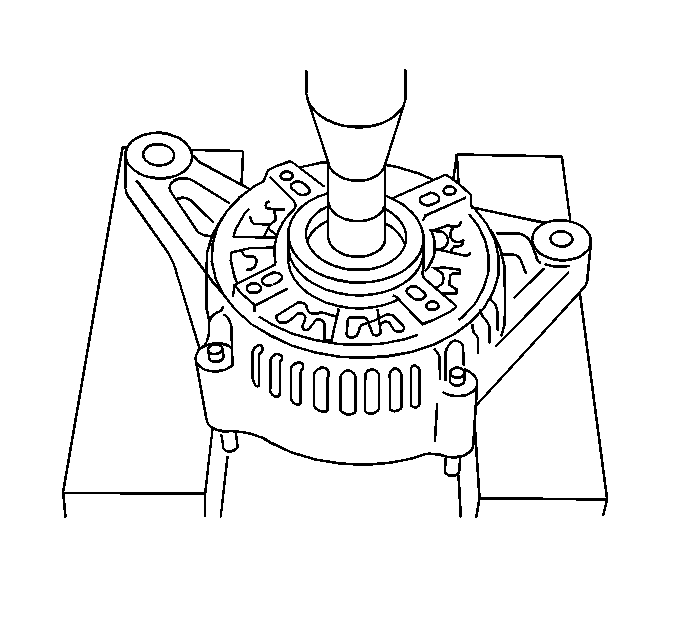

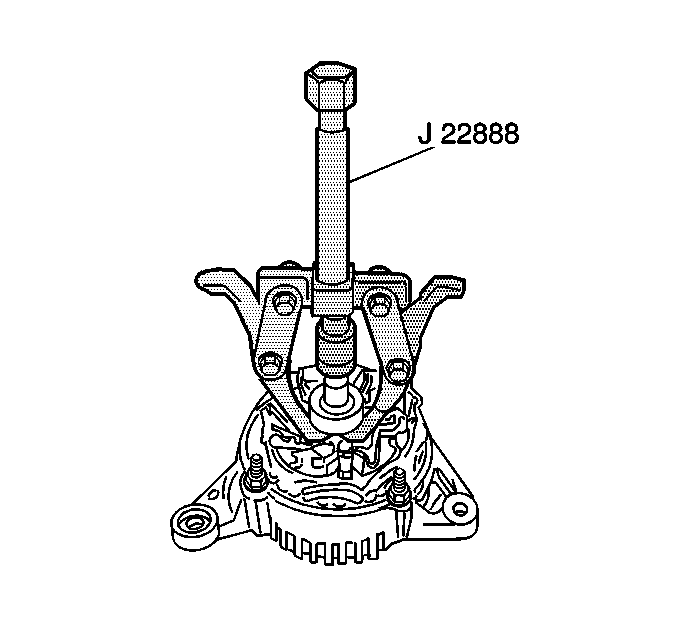
Important: Do not damage the rotor fan during bearing removal.
Measuring Procedure
- Measure the resistance between the rotor slip rings (2) with the J 39200 . If the resistance is greater than specifications, replace the rotor.
- Measure the resistance between the rotor slip rings (2) and the rotor (1) with the J 39200 . If the resistance is less than 5 ohms, replace the rotor.
- Measure the rotor slip rings (2) with the J 26900-5 . If the diameter is less than the minimum, or if the slip rings are rough or scored, replace the rotor.
- Measure the resistance between all stator leads (1) with the J 39200 . If the resistance is greater than 5 ohms for any measurement, replace the stator.
- Measure the resistance between all stator leads (1) and the stator core with the J 39200 . If the resistance is less than 5 ohms, replace the stator.
- Measure the exposed brush length (2) with the J 26900-5 . If the exposed length is less than the minimum, replace the brush holder assembly
- Measure the resistance between the rectifier positive terminal (4) and each rectifier terminal (3) with the J 39200 . Reverse the probes and measure the resistance again. If the resistance is not less than 5 ohms in one measurement and greater than 5 ohms in the other measurement, replace the rectifier.
- Measure the resistance between the rectifier negative terminal (3) and each rectifier terminal with the J 39200 . Reverse the probes and measure the resistance again. If the resistance is not less than 5 ohms in one measurement and greater than 5 ohms in the other measurement, replace the rectifier.

Rotor Slip Ring Resistance
2.7-3.1 ohms at 20°C (68°F)
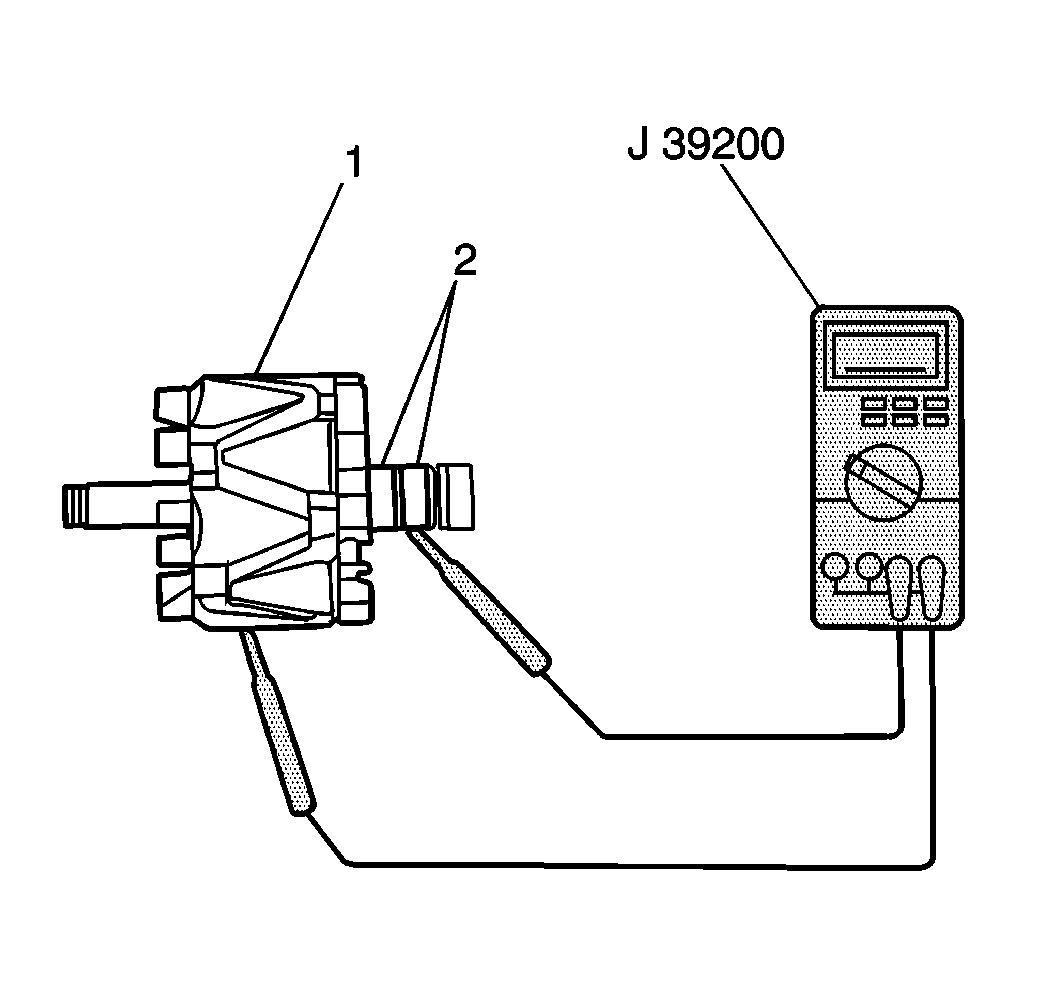
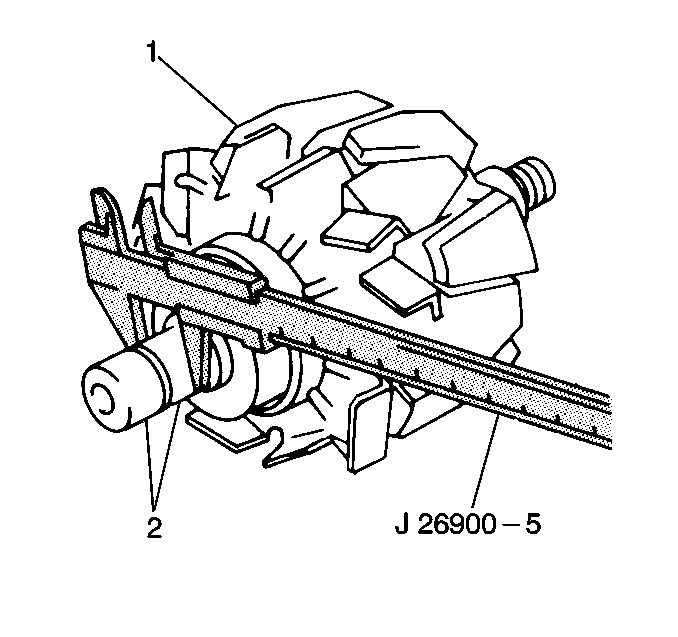
Standard Slip Ring Diameter
14.2-14.4 mm (0.559-0.567 in)
Minimum Slip Ring Diameter
12.8 mm (0.504 in)
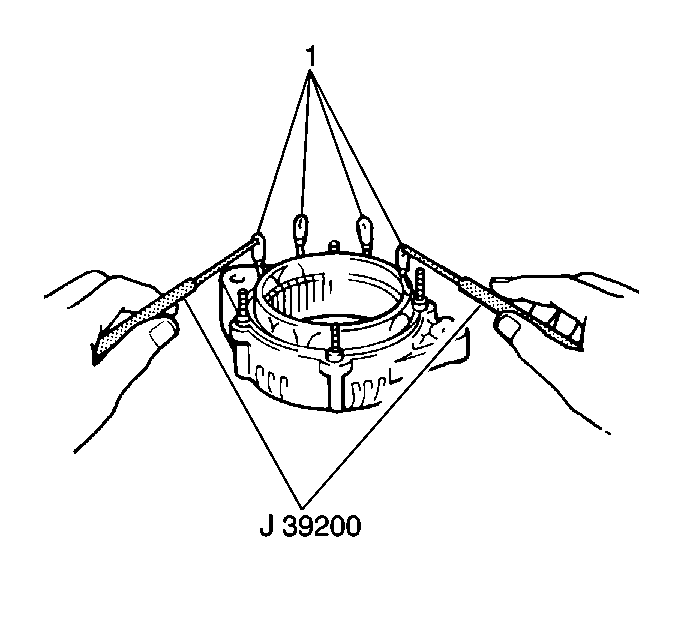
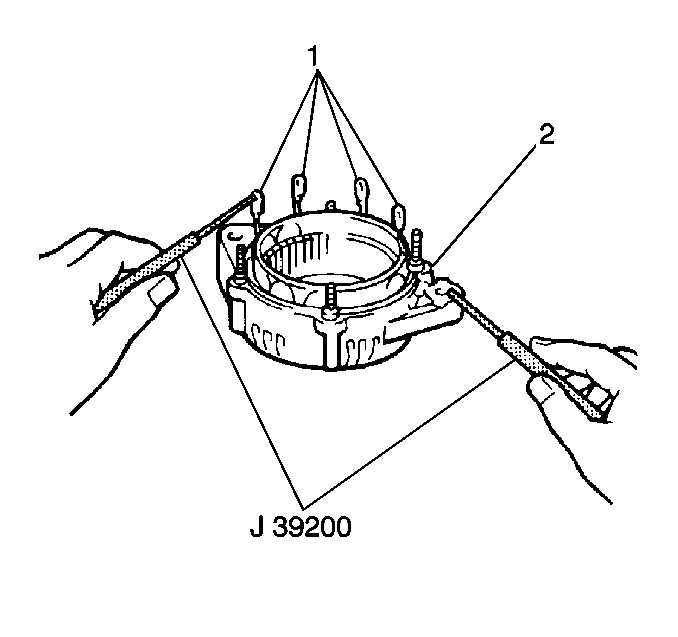

Standard Exposed Brush Length
10.5 mm (0.413 in)
Minimum Exposed Brush Length
1.5 mm (0.059 in)
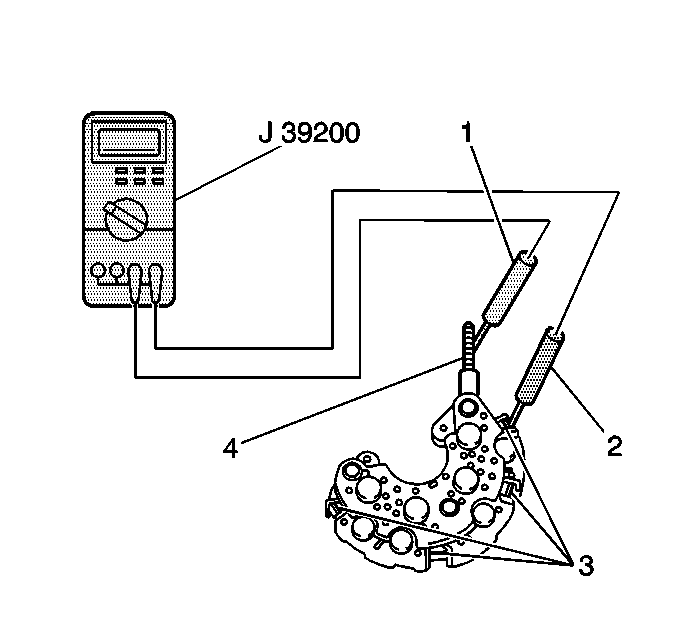
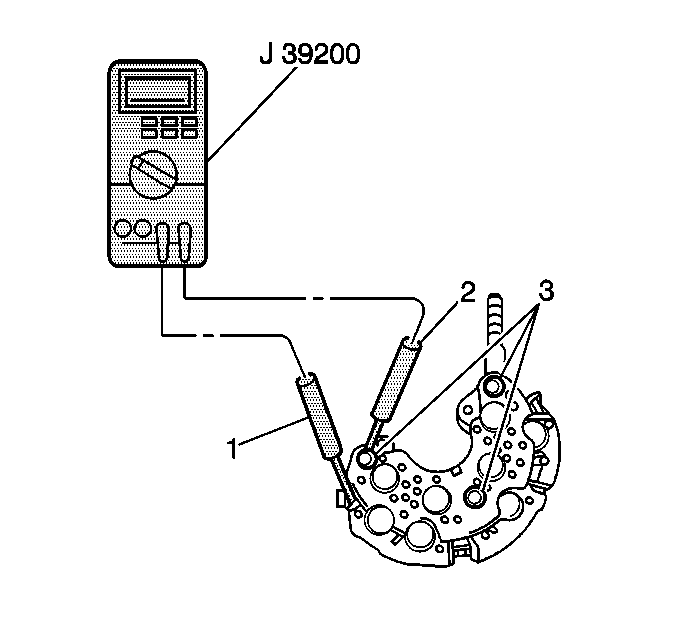
Assembly Procedure
- Install the rear bearing inner cover (3).
- Install the rear bearing to the rotor shaft using the J 35419 and a press.
- Install the rear bearing outer cover.
- Install the front bearing using a suitable adaptor (1) and a press.
- Install the bearing retainer.
- Install the four screws (1).
- Install the rotor to the drive end frame.
- Install the washer to the rotor.
- Install the rectifier end frame by using a 29 mm socket or other suitable adaptor and a press.
- Install the wire clip (1) and 4 nuts (2).
- Install the pulley and the nut using the J 35452 or the J 39194-B . Tighten the 7/8 in nut while holding the rotor shaft stationary with the 10 mm socket.
- Install the 4 rubber insulators.
- Install the rectifier and the 4 screws (2).
- Install the seal on the rectifier end frame.
- Install the voltage regulator (1).
- Install the brush holder (3).
- Install the 5 screws (2).
- Install the brush holder cover.
- Install the end cover.
- Install the plate terminal
- Install the 3 nuts (2) and 1 bolt.
- Install the terminal insulator (2) and the nut (3).
- Inspect that the rotor turns smoothly.
- Install the generator to the vehicle. Refer to Generator Replacement .

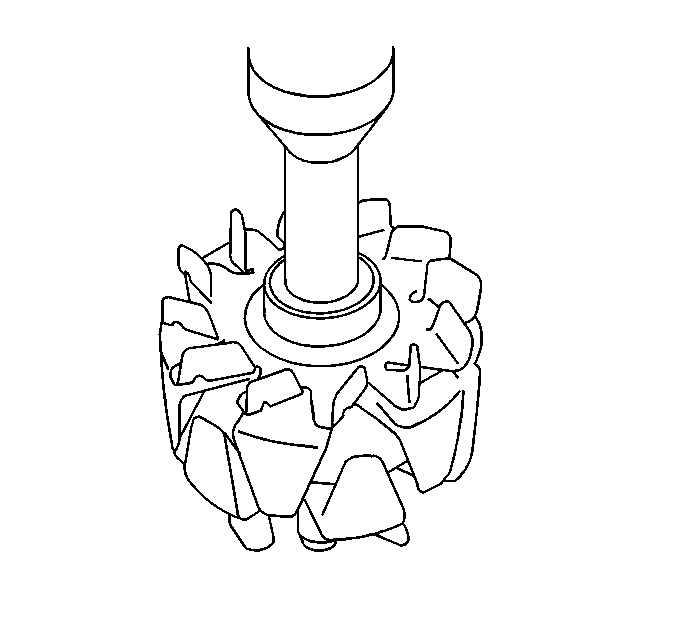
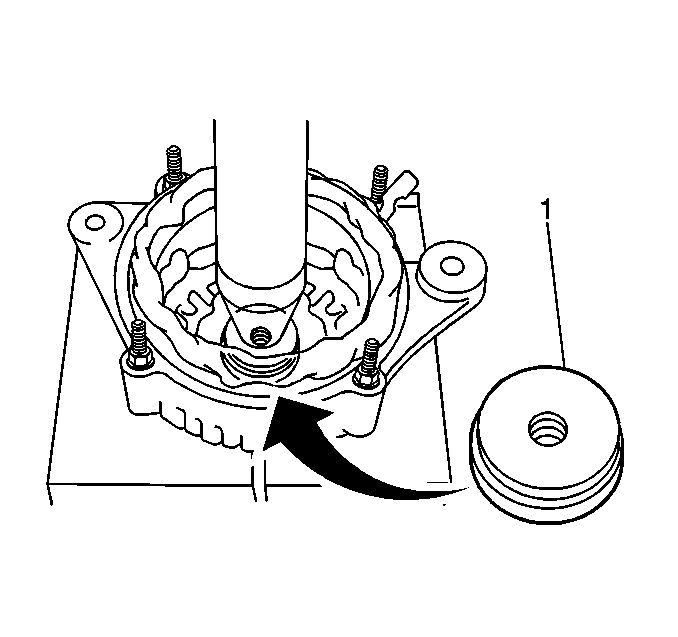

Notice: Use the correct fastener in the correct location. Replacement fasteners must be the correct part number for that application. Fasteners requiring replacement or fasteners requiring the use of thread locking compound or sealant are identified in the service procedure. Do not use paints, lubricants, or corrosion inhibitors on fasteners or fastener joint surfaces unless specified. These coatings affect fastener torque and joint clamping force and may damage the fastener. Use the correct tightening sequence and specifications when installing fasteners in order to avoid damage to parts and systems.
Tighten
Tighten the 4 screws to 3.0 N·m (27 lb in).

Tighten
| • | Tighten the nut with the clip to 5.5 N·m (48 lb in). |
| • | Tighten the 3 nuts to 4.5 N·m (40 lb in). |

Tighten
Tighten the pulley nut to 111 N·m (81 lb ft).

Tighten
Tighten the 4 screws to 3 N·m (26 lb in).

Important: Note the correct orientation of the brush holder.
Tighten
Tighten the 5 screws to 2.0 N·m (18 lb in).

Tighten
| • | Tighten the 3 nuts to 4.5 N·m (39 lb in). |
| • | Tighten the 1 bolt to 4 N·m (35 lb in). |

Tighten
Tighten the nut to 4 N·m (36 lb in).
